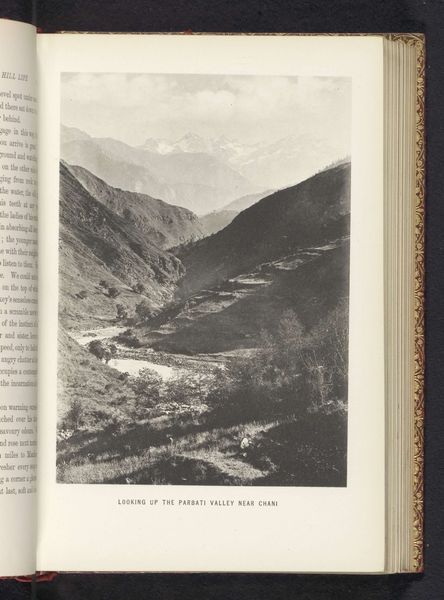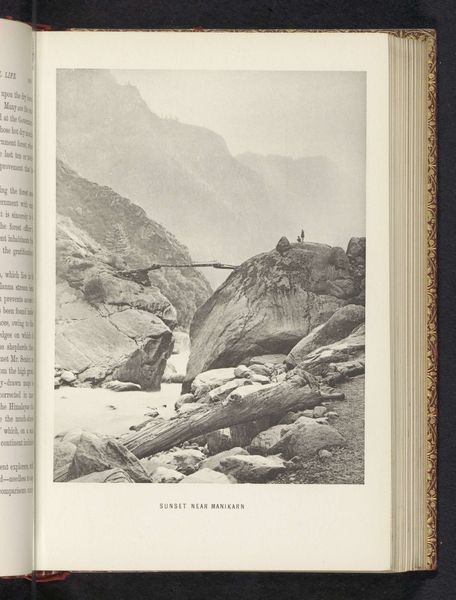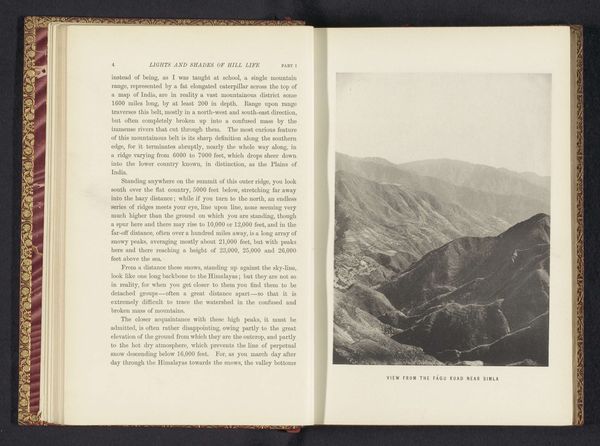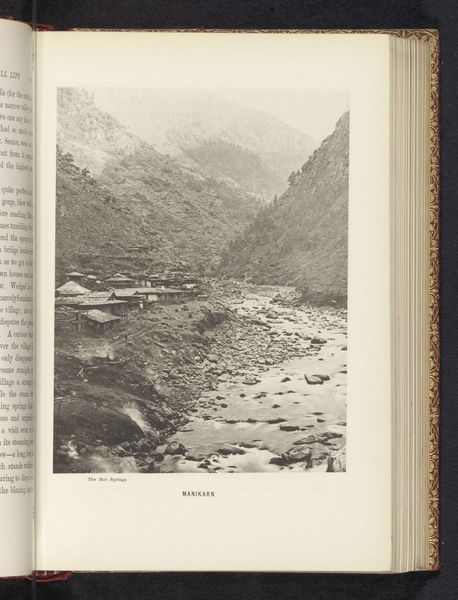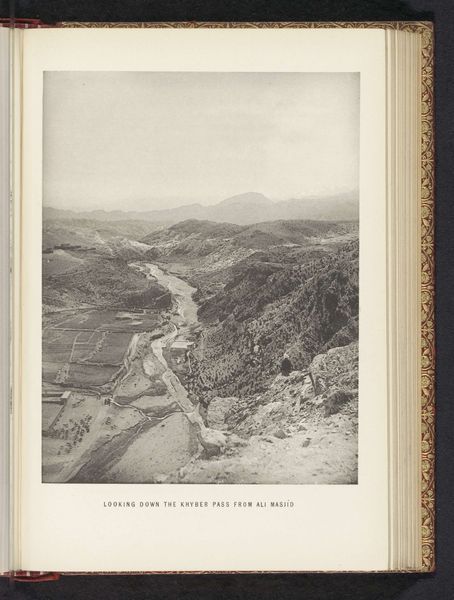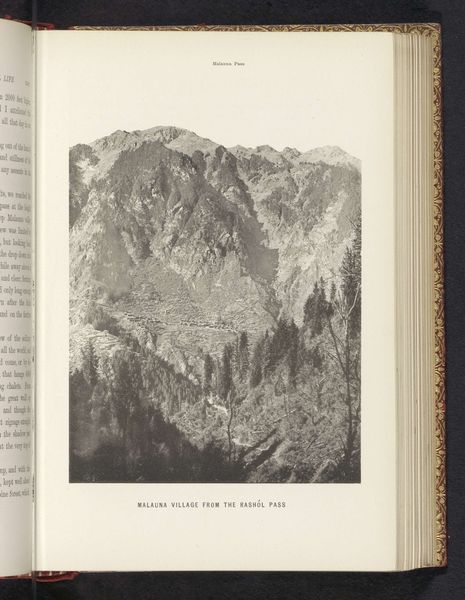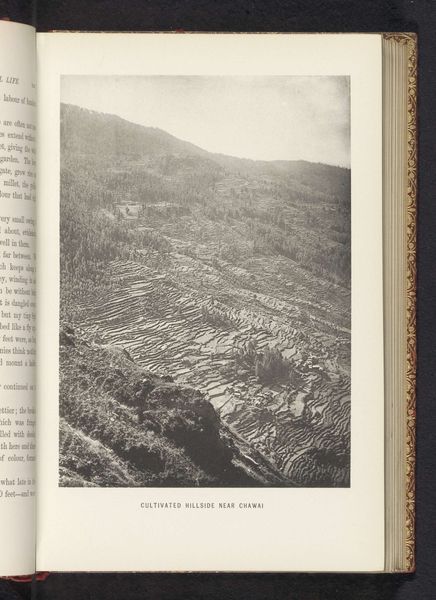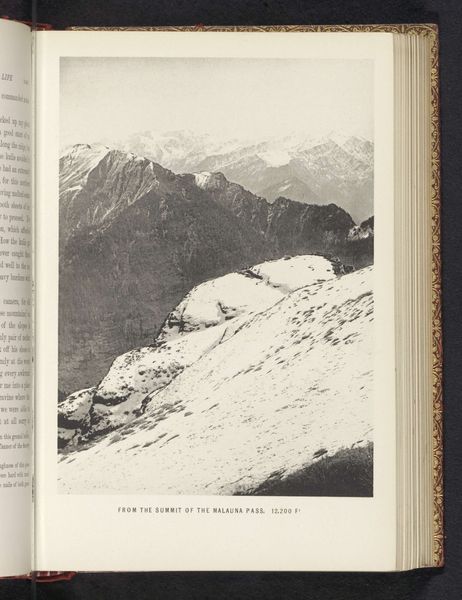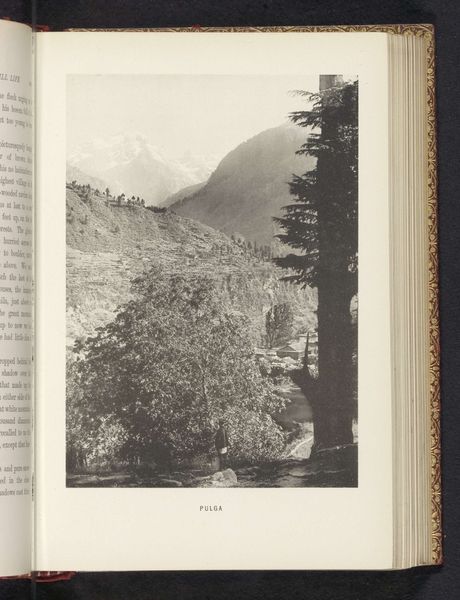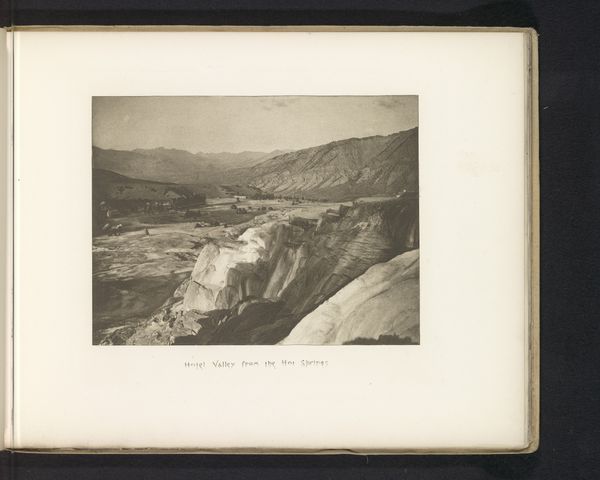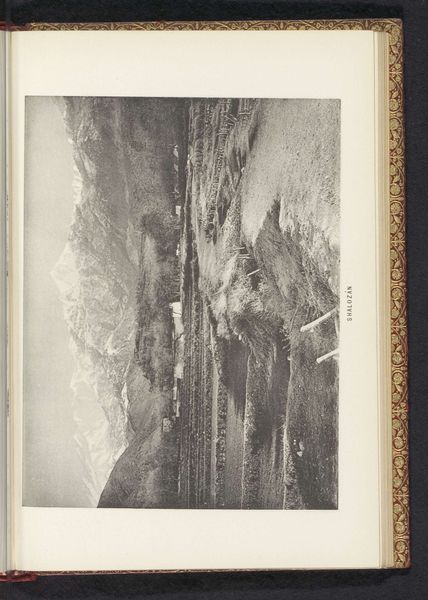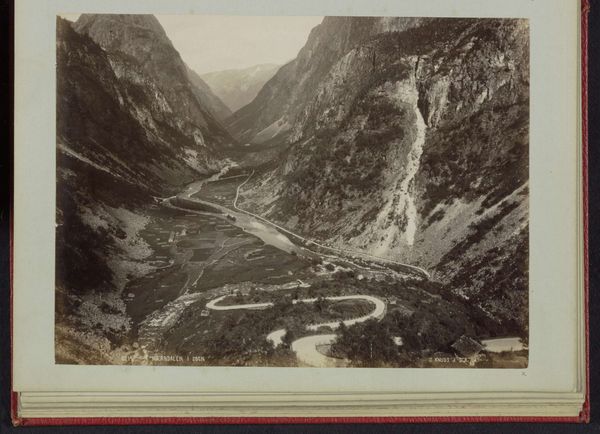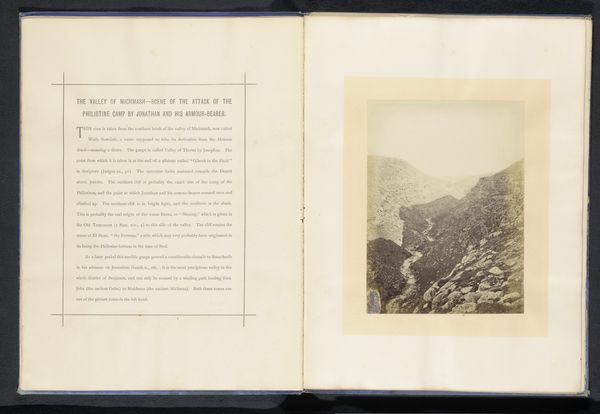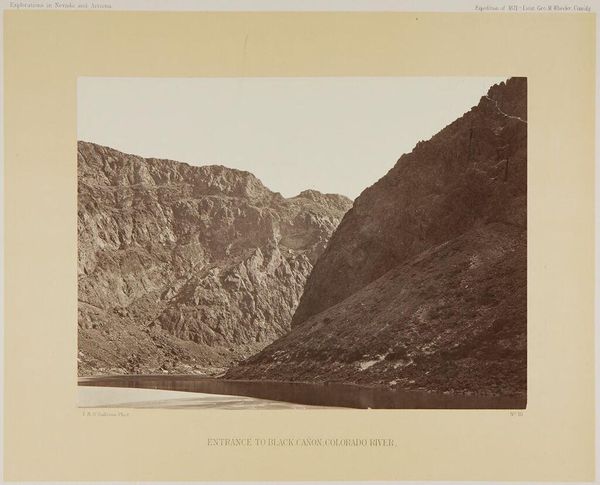
print, photography, gelatin-silver-print
# print
#
landscape
#
river
#
photography
#
gelatin-silver-print
Dimensions: height 165 mm, width 120 mm
Copyright: Rijks Museum: Open Domain
Editor: This gelatin-silver print, titled "Looking down into the Sutlej Valley from Komarsen," was created by Frederick Saint John Gore before 1895. The tonal range creates a rather imposing scene. The river is dramatically framed by mountains. What strikes you about it? Curator: Well, considering the date, it’s intriguing to think about the role images like this played in shaping perceptions of colonial landscapes. Were these images intended as scientific documentation, or were they promotional tools, encouraging British expansion and control by portraying a landscape ripe for exploitation? Who was the intended audience? Editor: That’s interesting, I hadn’t thought about the context in which it was shown. Curator: Consider the act of "looking down." Who gets to occupy that position of power, and what does it imply about their relationship to the landscape and the people who inhabit it? Were they also “looking down” on local inhabitants, imposing British systems of government and law on cultures wholly unlike their own? The use of photography could then become part of a colonial system of power. Editor: So, it's less a neutral landscape and more a statement of British dominion. Curator: Precisely! By viewing the Sutlej Valley through this lens, we start to see it as a stage upon which power dynamics played out, using photography to further its goals. What was presented as factual documentation became a tool for constructing and reinforcing British control. Editor: That definitely provides a whole new dimension to understanding the artwork, considering both the visual and its underlying political messaging. I'll definitely be looking at historical landscape photography differently from now on! Curator: Excellent, recognizing this context helps us look deeper at the artist's intentions in constructing and presenting that image to an audience.
Comments
No comments
Be the first to comment and join the conversation on the ultimate creative platform.
